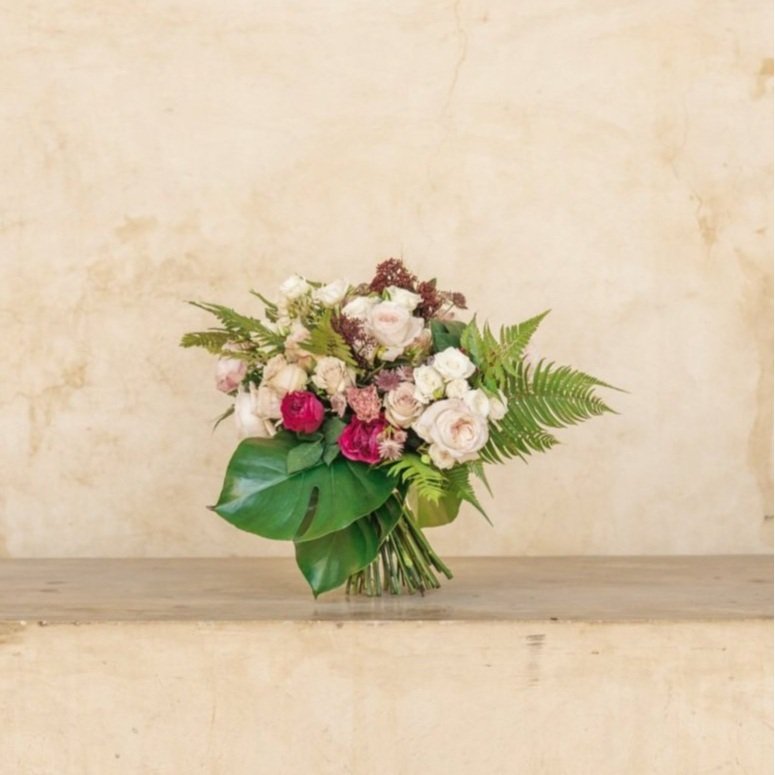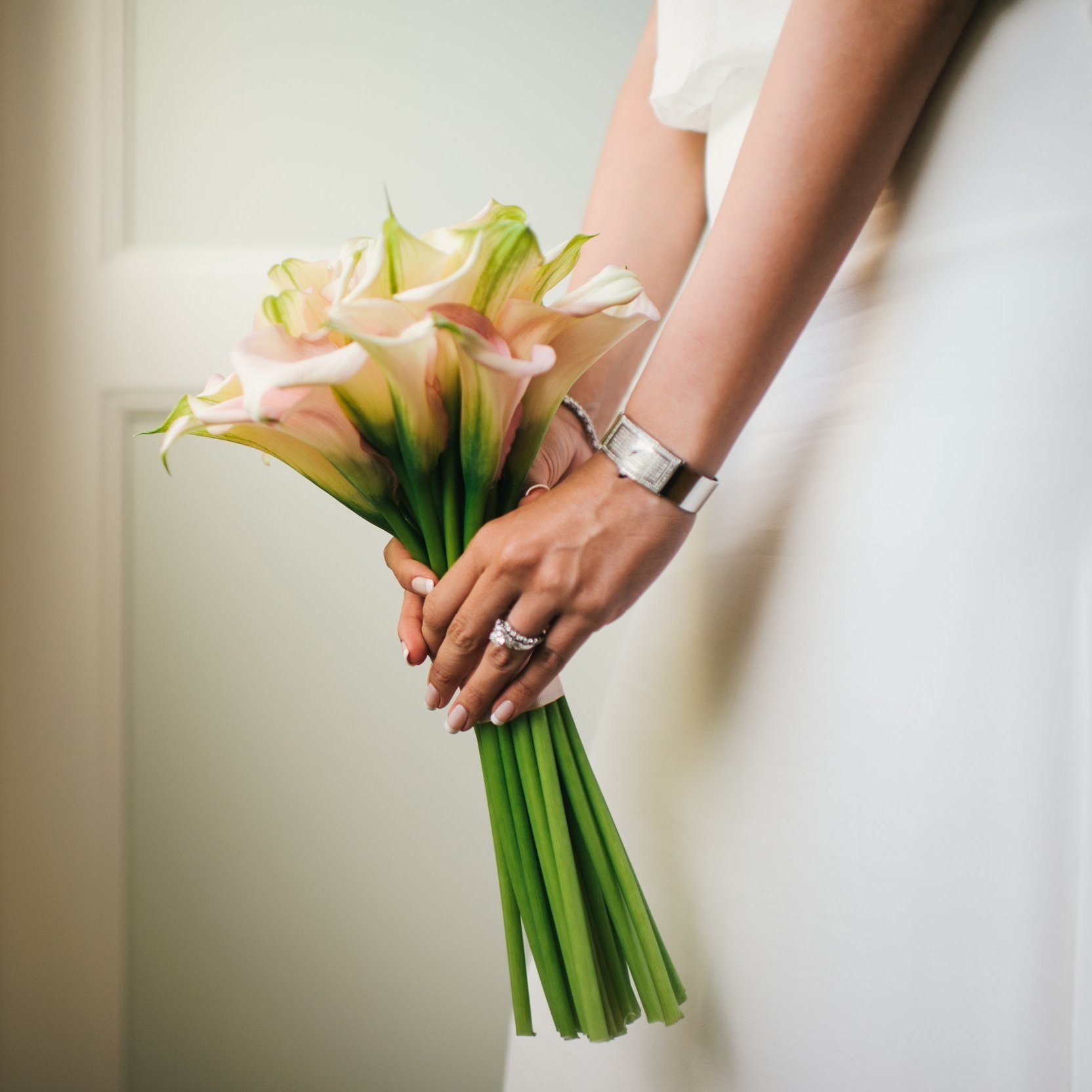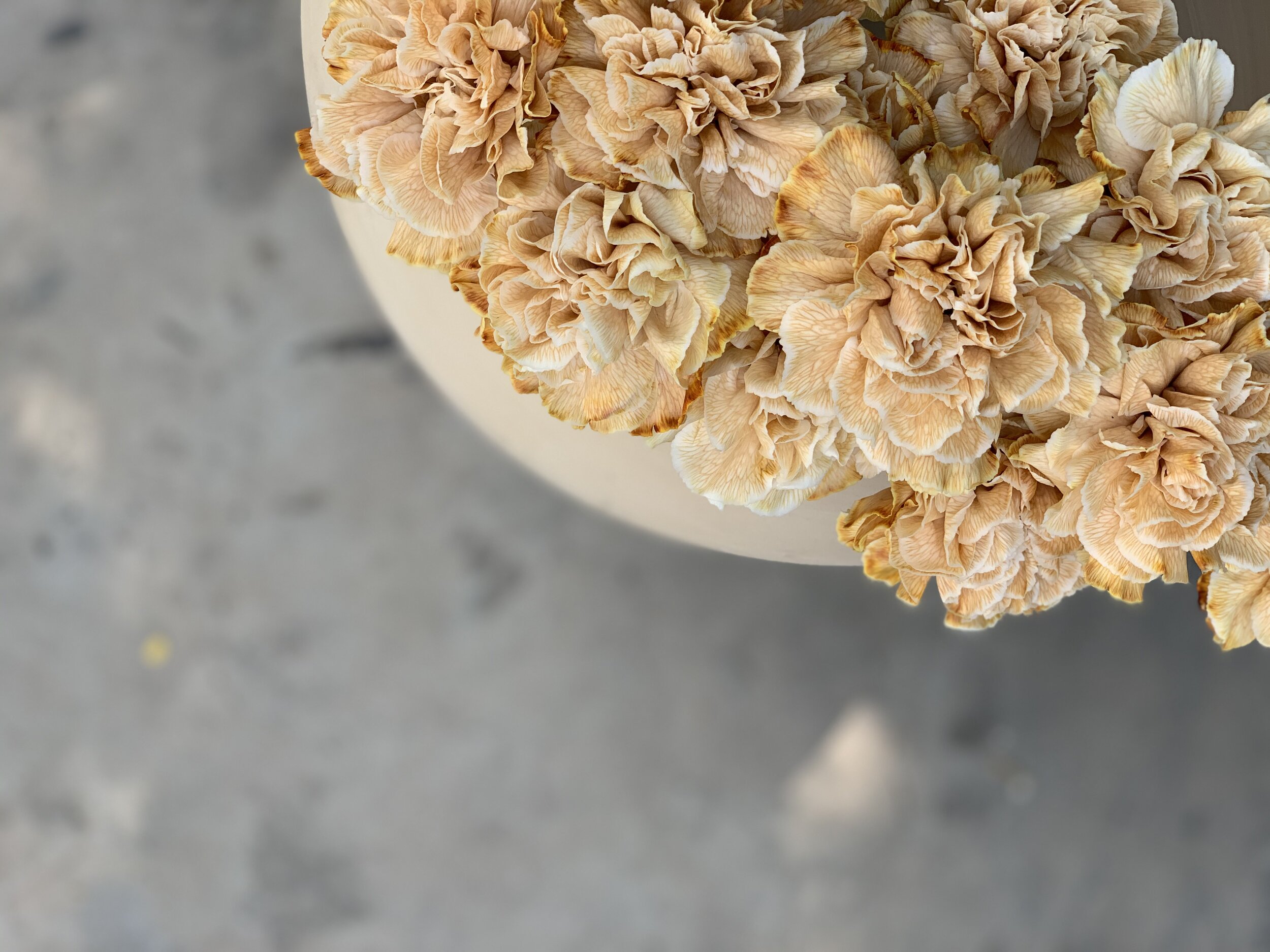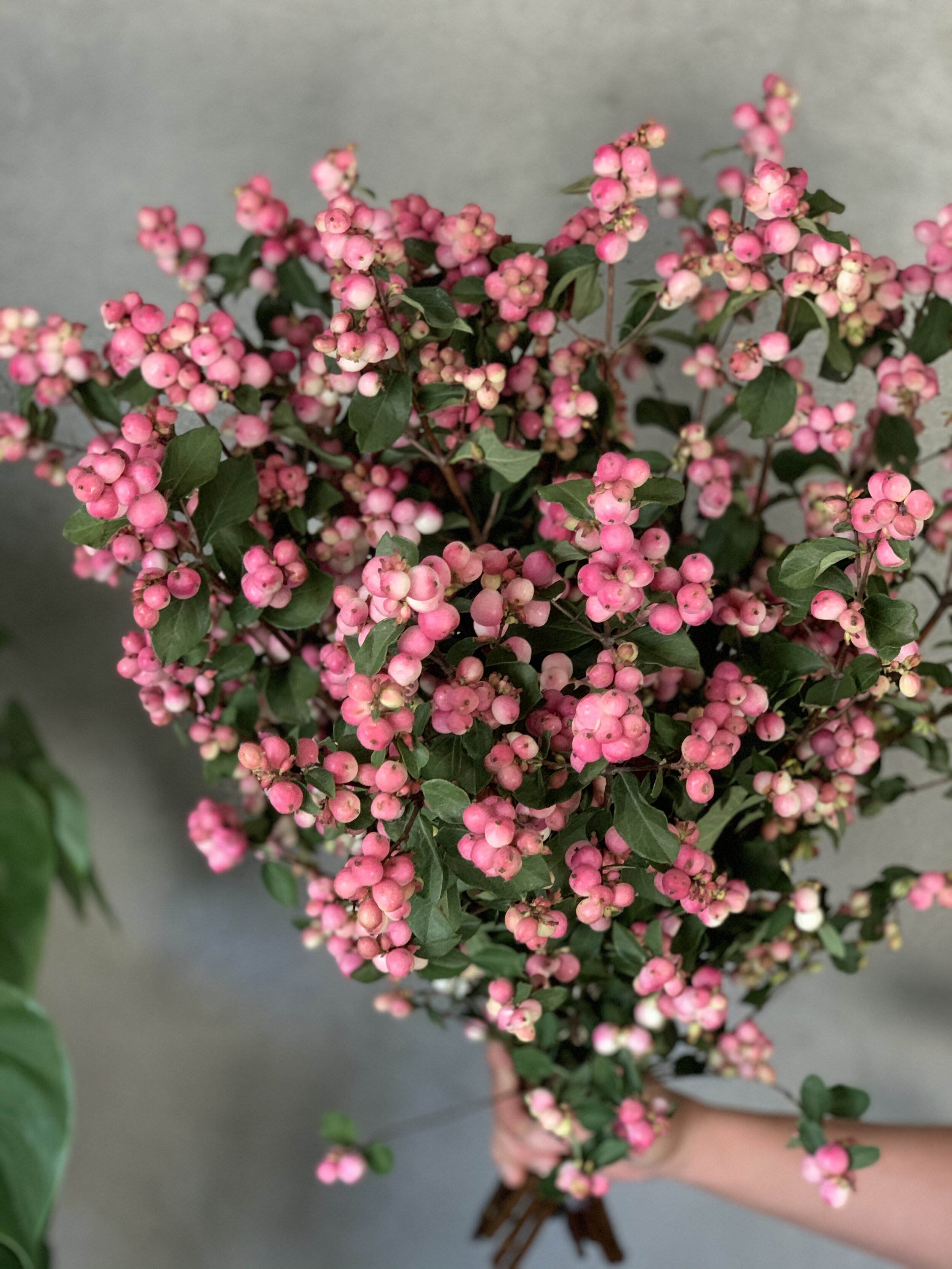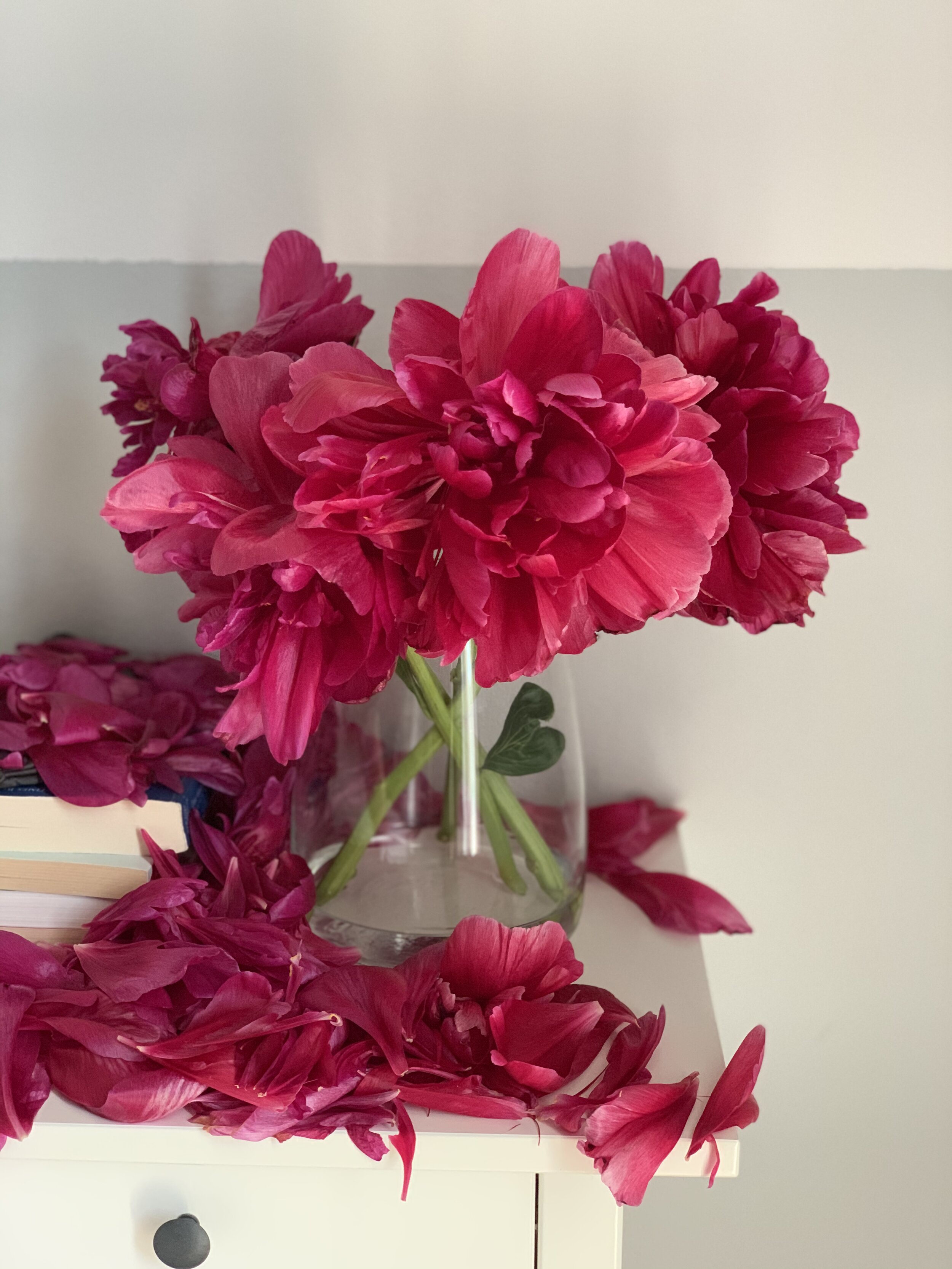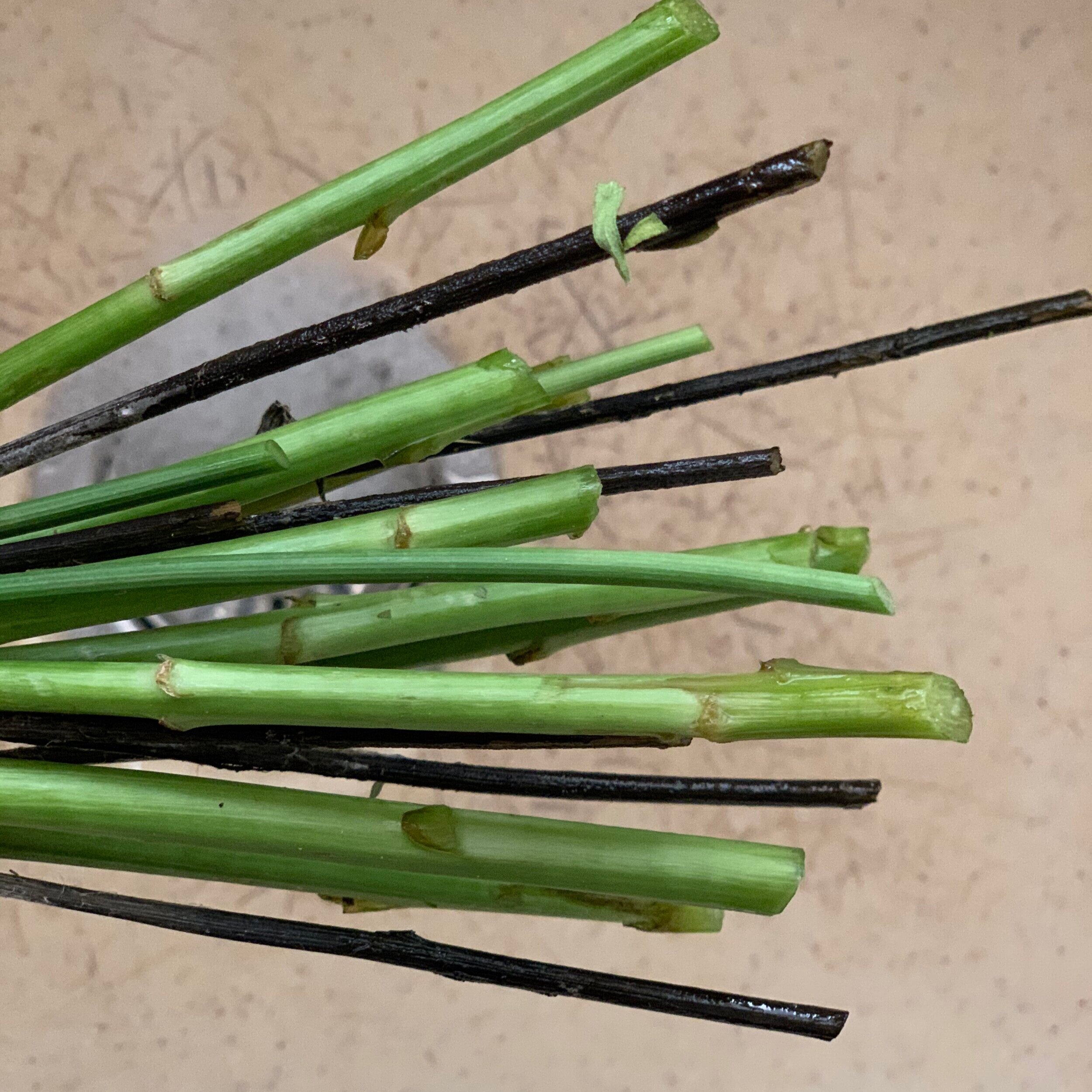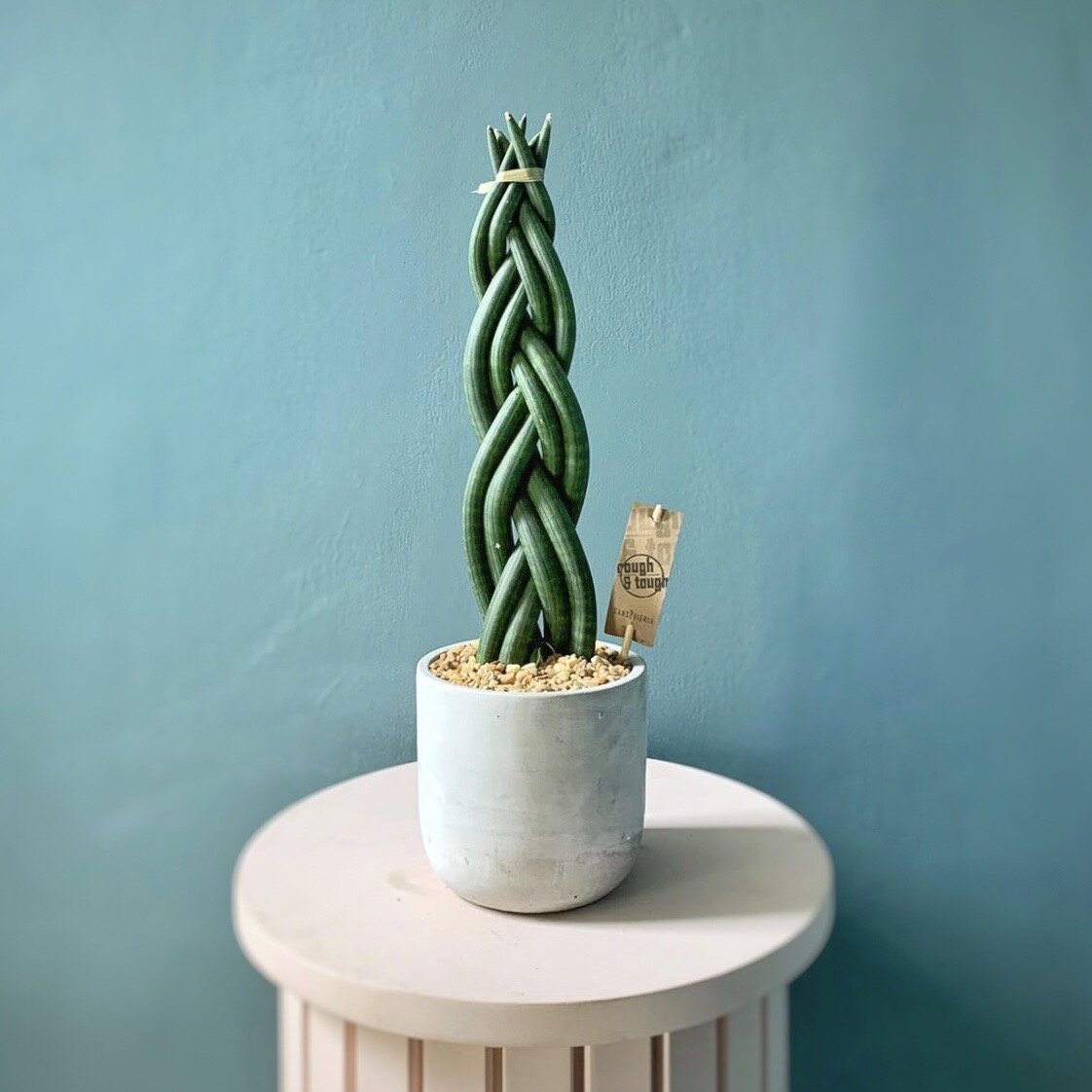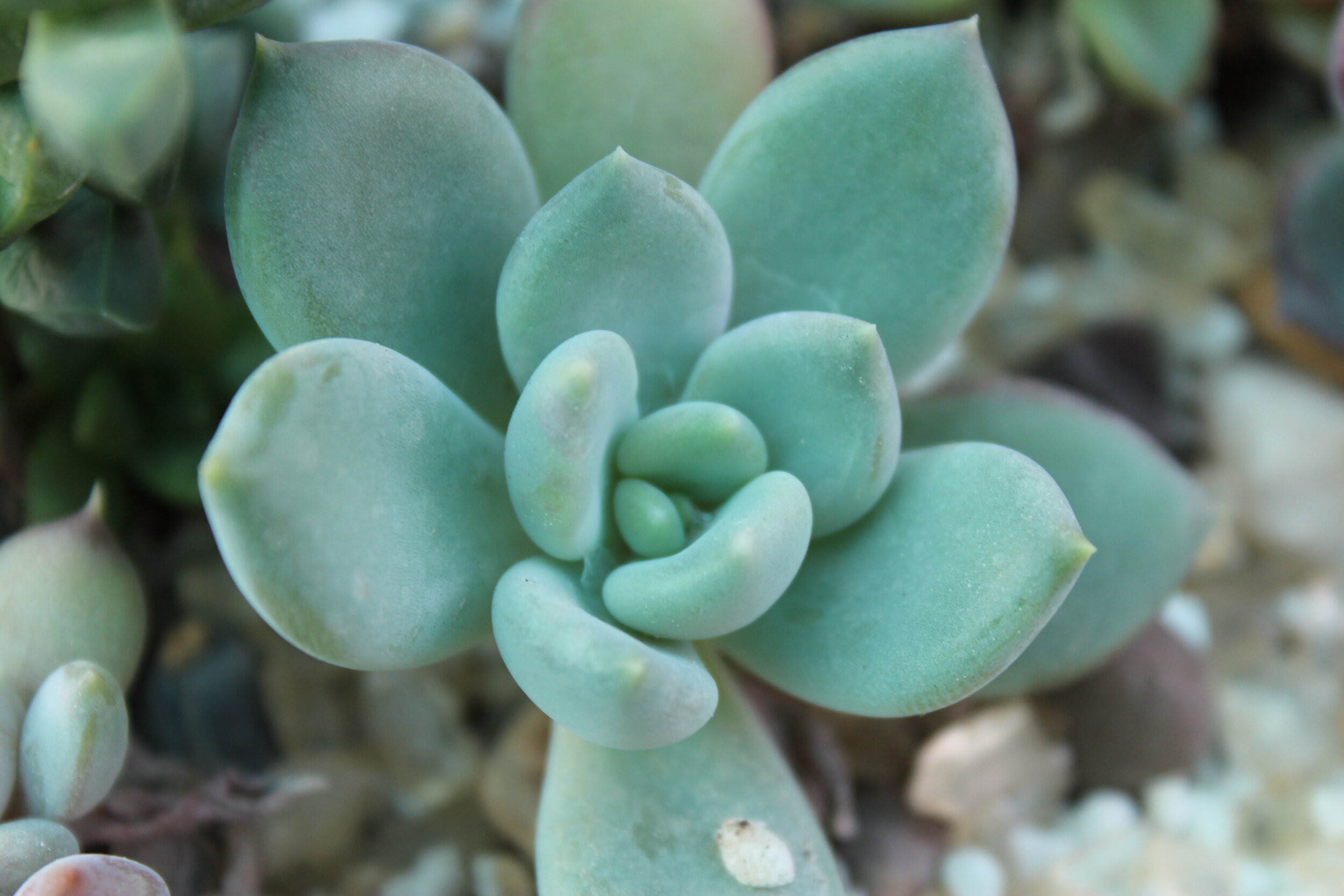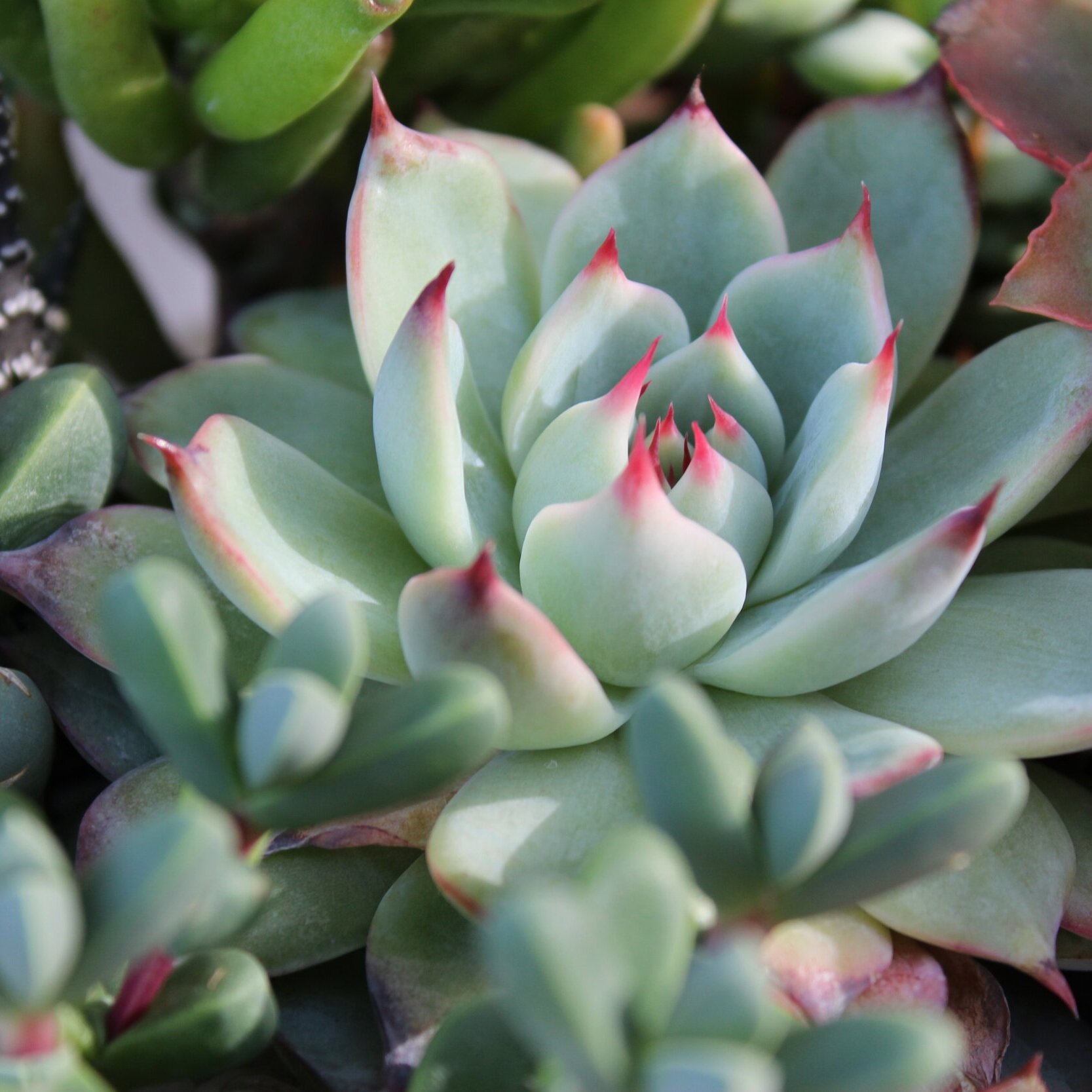A bridal bouquet is easily one of the more intimate decisions that you will make for your wedding. While it’s easy to browse Pinterest and Instagram for inspo, it’s helpful to have some criteria to guide your decision. Flower type is the most obvious criteria for your bridal bouquet however it is not the only thing to consider.
We’ve put together some basic pointers on selecting a bridal bouquet to fit your style!
Shape: Structured
Cascade
This traditional tear-drop shape is making a comeback in more contemporary styles. Luxe Phalaenopsis orchids and or flowing vines are currently being used to create softer, natural-looking draped bouquets. This style tends to be fuller and more classic.
Posy (aka Round)
Posy bouquets are timeless and one of the most requested bridal bouquet styles in our region. The compact shape suits more rounded florals such as Peonies, Ranunculus, and Garden Roses. Because of its simplicity, this style tends to suit most dresses and can be easily be petite or lusher depending on your preference.
Shape: Abstract
Asymmetrical
This is the most contemporary shape with the bouquet being loosely arranged following the shape of the florals used. This style can be both modern or garden-y and suits a wide range of florals. Asymmetrical designs are often associated with a more bohemian and casual feel.
Hand-Tied
This shape is a simpler design which tends to evoke hand-picked florals. The shape tends to be more petite and casual and works with either single blooms or a mix of eclectic blooms depending on your dress and event.
2. Colour: Soft and Subtle
All Whites and Pastels
Soft romantic whites and pastel shades are most traditional for bridal bouquets. All white bouquets tend to easily blend with wedding dresses; despite being monochromatic, these styles can use a variety of blooms and foliage to create texture and movement. Pastel bouquets are predominantly pale and white with highlights of soft pink or peach shades; these bouquets provide subtle colour against a white or cream dress.
2. Colour: Neutral or Vibrant
Monochromatic Neutrals
These bouquets feature florals in taupe and cream shades. The solid colour of these bouquets easily suit most dress colours and styles. Neutral bouquets are most easily achieved with the the same blooms but can be artfully done with a mix of a few blooms.
Vibrant Hues
Vibrant bridal bouquets use an eclectic selection of florals in complimentary and or contrasting florals with pops of colours. These bouquets are often more bohemian in style and tend to suit day-time and or outdoor events.
3. Flower Selection: Mono or Garden-y
Mono Blooms
These bouquets are made up entirely of a single flower and typically feature Roses, Peonies, Ranunculus, or Freesias (naturally round flowers) with some supporting foliage. Mono bloom bouquets are usually round in shape but can also be done in a hand-tied or abstract style. Flowers that naturally drape such as Phalaenopsis orchids can be constructed into mono cascade bouquet.
Garden-Style Bouquets
Garden bouquets feature a mix of complimentary florals and are lush with a mix of foliage. The mix of florals and foliage makes each bouquet unique with lots of texture and movement. These bouquets feel classic yet effortless and can be done in a range of shapes and sizes.
3. Flower Selection: Non-Traditional Dried or Eclectic Mix
More brides are opting for non-traditional bouquets featuring all dried florals or a mix of fresh florals with dried and or dyed florals and foliage. These bouquets are often trendy and feature styling and florals that are popular at the time. Because of the unique selection of flowers, these bouquets are often abstract and looser in shape and structure. Dried bouquets or dried florals make a lovely keepsake.
4. Size
There is no hard and fast rule about how lush or petite your bouquet should be and this is entirely your preference! Some brides prefer the full and opulent look of a lush bouquet while others may opt for a more demure size because of the floral selection or dress style. Do keep in mind that fuller bouquets do weight a bit more!
5. Accessories
Accessories add a personal touch to your bouquet. The wrapping for your bouquet can include luxe silk ribbons that complement your dress or heirloom ribbons, silks, or lace from another dress. Luxe silk ribbons can be done in a traditional tight wrap or in a flowing cascade style, silk ribbons come in a range of colours that can add a pop of colour to your bouquet and dress. Some brides opt to add mementos to their ribbon tie usually in the form of a family pendent with personal or religious significance.
Pro Tips on Keeping your Bouquet Fresh!
Always schedule to pick up your bouquet in person on the day of your event, this allows for any adjustments that have to be made.
Your bouquet should never be stored in the fridge! A cool air-conditioned room away from direct sunlight is sufficient.
Keep your bouquet in a small vase or sturdy cup filled with a little water when you aren’t holding it. Keep a small towel handy to blot the stems so you don’t get water stains on your dress.
Each bouquet has a “face”, this is the best side of the bouquet and should be facing away from you towards the photographer
Hold your bouquet just below waist height. This can get tiring so pass it on for a brief moment to give your arms break or lay it gently on its side.












